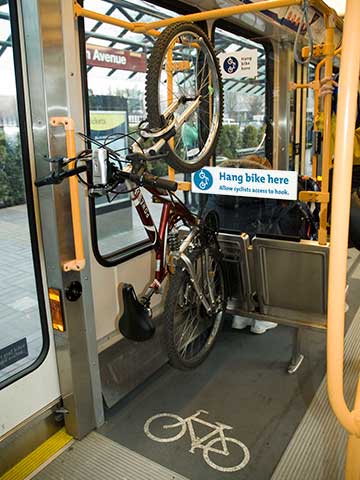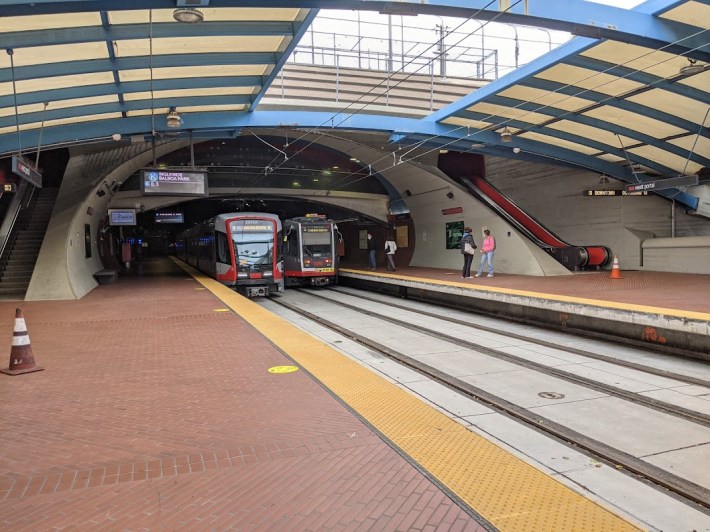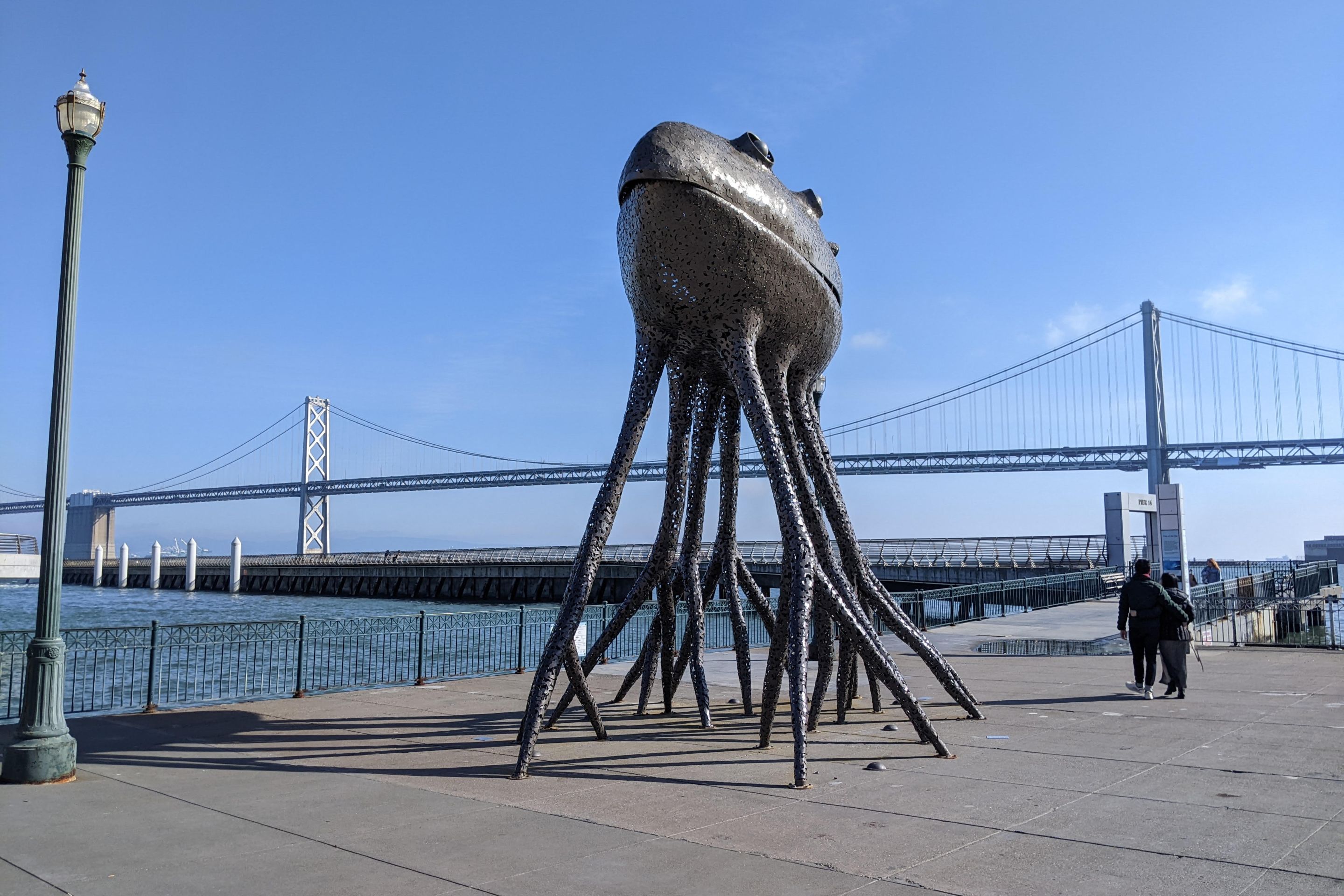Bikes are permitted, and in fact encouraged with dedicated bike racks and bike cars, onboard BART, SMART, Amtrak, Caltrain, ACE, VTA, eBART, and even AC Transit's Tempo Bus Rapid Transit.
Only Muni rail says "no" to full-size bikes. It was a fight to even get Muni rail to accept folding bikes.
Maybe that made sense, pre-pandemic, during rush hour when trains were at crush loads. But that's not a problem right now. And it never made sense off-peak, when trains have plenty of room for a few two-wheel steeds. Muni isn't just an outlier for the Bay Area: it's the only light-rail system in California, and one of the only in the entire country, that still has this ban.

This needs to change. And here's an idea for a bikes-on-board-Muni Rail pilot: how about allowing bikes between Castro and West Portal?
"I live by Castro station and crossing that hill with a bike in the subway would open up so much of the city to our family," said bike advocate Matt Brezina about the idea. "I have a folder I’ve brought on the subway a few times. But with kids, that is no longer an option. Cool idea! Now is the time!"
Getting between Castro, West Portal, and Forest Hill by bike is, to state the obvious, extremely challenging (for readers who don't know San Francisco, the train goes under a 900-foot high hill there). Allowing bikes on trains between those three stops would allow bike riders to connect with huge parts of the city that are otherwise difficult to access on two wheels. It also involves three stations with large, level platforms, so there's no danger of cyclists crowding the stations or falling trying to get up and down light-rail vehicle steps. Forest Hill even has large elevators that can easily accommodate bikes.

Inside the tunnel, Muni operations aren't hampered by traffic and other surface conflicts that lead to train delays and bunching, the root cause of most overcrowding. Muni even has the option to add shuttle trains (which only run in the tunnel) if it finds itself without enough capacity. In other words, while there's really no credible reason to ban bikes anywhere on the system, it's especially silly between Castro and West Portal.
That said, crowds aren't exactly the problem right now, as seen in this chart below of pre-pandemic versus current ridership:

The pandemic-produced low ridership makes it the perfect time for a bike pilot. Muni doesn't even have to invent a "courtesy policy" for bikes--they can just crib one from VTA, AC Transit's Tempo Bus, Portland's TriMet, or any other transit operator they wish.
It may not be a high priority for the city right now, Brezina pointed out. There may not even be much demand. On the other hand, it's also not exactly a heavy lift, is it?
It's time for "progressive" San Francisco to join San Diego, Los Angeles, Sacramento, San Jose, Portland, Seattle, Denver, Phoenix, etc., in addition to its peer agencies in the Bay Area, and allow bikes on board light rail. It's just silly for the agency to continue turning away customers as it struggles to regain ridership.






